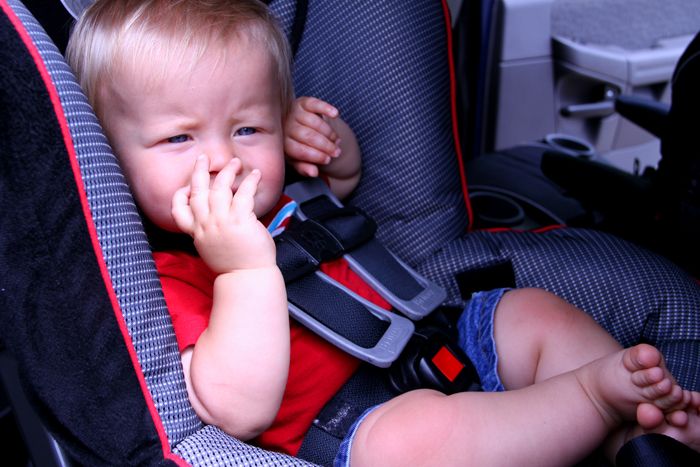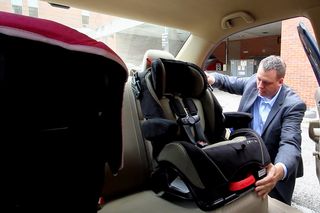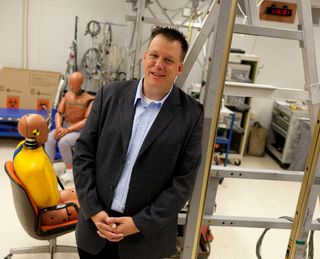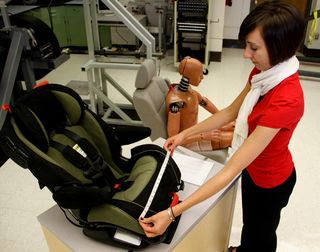
Why Your Child's Car Seat Might Not Be Safe (Op-Ed)

John Bolte is director of the Injury Biomechanics Research Center at the Ohio State University College of Medicine. He contributed this article to LiveScience's Expert Voices: Op-Ed & Insights.
For parents with a baby, a car seat is a requirement from day one. For first-time parents, it can be a daunting experience to try and pick out the best one. Decisions are often based on price, safety features, or, for some parents, color scheme.
The good news is that all car seats on the market in the United States meet the U.S. government's safety standards, so any new car seat is technically safe. But what many parents may not know is that some car seats are not the best and safest fit for their particular brand of vehicle.

Since there are so many differences in vehicle seats, car-seat manufacturers need parents to evaluate their own, unique situations. Previous studies show that 73 to 90 percent of all car seats are installed improperly, some due to installation errors and others because there is an incompatibility between the car seat and the vehicle.
Sometimes, manufacturers recommend making modifications to the seat in order to get it to fit properly in the car, such as rolling up a towel or using a "pool noodle" (a floating foam pole designed for swimming-pool use). Many parents wonder whether using after-market items — products not manufactured by a car-seat's designer — is truly safe. As long as the parent is able to achieve the proper recline angle and a tight installation (less than 1 inch of side-to-side motion at the point of attachment), then the seat should react as it was designed to in a crash.
The main problem with after-market devices such as towels and pool noodles is that they place a lot of responsibility on the consumer, and not every consumer is going to place those items properly. Purchasing a car seat that fits well and is easy to install stands a greater chance of being used properly every time.
Here's why achieving a tight installation is so important: the vast majority of pediatric injuries in vehicles are caused by the child colliding with hard surfaces inside of the vehicle. Loose car-seat installations can allow a child's head, arms and legs to flail out of the car seat and strike the car door, center console or front-row seats. Tight installations, on the other hand, help keep the child's head and limbs safely tucked within the padded shell of the car seat.
Sign up for the Live Science daily newsletter now
Get the world’s most fascinating discoveries delivered straight to your inbox.
I, along with my team members at the Ohio State University College of Medicine, and colleagues at the Center for Child Injury Prevention Studies at Children's Hospital of Philadelphia, have been studying the compatibility of car seats and various vehicle sizes. In an effort to create a set of guidelines for parents, grandparents and others to reference when shopping for a car seat, research associate Julie Bing and a team of students collected a sample of dimensions from 54 vehicles and 59 car seats currently on the market and identified the most common sources of incompatibility. We analyzed and examined data from 3,186 car seat/vehicle combinations.

Our research team found that when it comes to seat-pan angle, especially for rear-facing car seats, 43.6 percent of all combinations were unacceptable. The seat pan angle is the "slope" of the seat's surface (the surface that an adult's thighs would rest on). Our study found that this angle can vary by about 15 degrees among different vehicles. The seat pan is important because it determines the angle upon which a rear-facing car seat rests.

If a vehicle has unusually steep or shallow seat-pan angles, the parent may have a difficult time getting a car seat installed at the manufacturer's recommended recline angle. Most car seats are designed to allow the child's back and head to recline at an angle between 30 and 45 degrees from vertical. The 15-degree variation in vehicle seat pans on the market can result in car seats being installed outside of the ideal recline range.
Any car seat on the market is required to pass specific tests determined by federal regulations. Car seat manufacturers pass these tests with their car seats installed at certain angles. Deviating from this angle may increase a child's risk of injury. What this means for parents is that it can be difficult to sit the car seat in the backseat and have it match up perfectly.
Before buying a seat, it's important to measure your car first. Pay attention to the angle of the backseat, the width and even the built-in headrests. If the seat's headrest is at an angle, and you have a tall car seat, the car seat won't sit back against the vehicle seat because the headrest is in the way.

It is also important that a parent take note of how wide the vehicle seat is along the back edge, where the two planes of the seat meet. You want the back edge of the car seat to fit snugly along that line. One should take this measurement with the door closed, because sometimes the door intrudes on the seat space. Be aware of large, steep or stiff bolster foam. Usually the foam of the seat can be pushed down to create a flat, stable surface for the car seat, but this is not always possible.
Some stores will actually let you take a car seat model off the shelf and out to your car to see if it fits — parents should ask at the store if they will allow this before making a purchase. Finally, once parents decide on a certain model, it's always a good idea to check in with the local fire department — they can help make sure the car seat is installed properly.
The views expressed are those of the author and do not necessarily reflect the views of the publisher. This version of the article was originally published on LiveScience.












